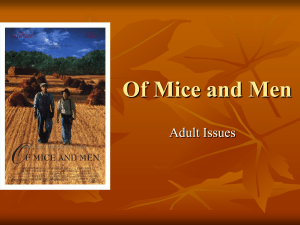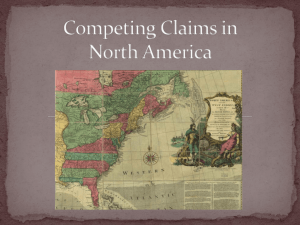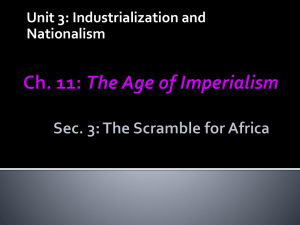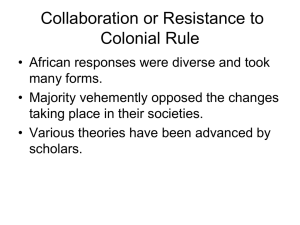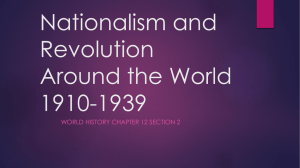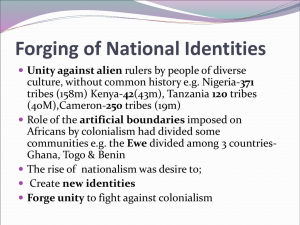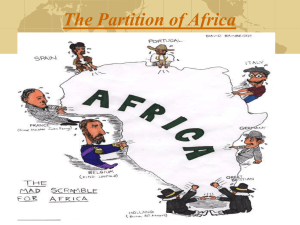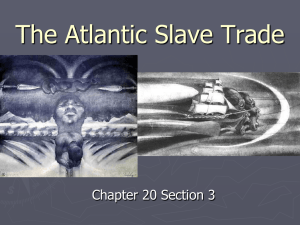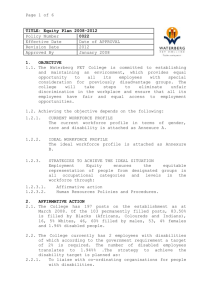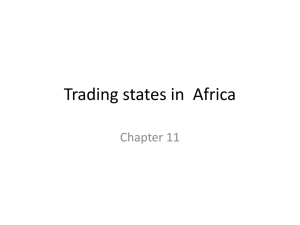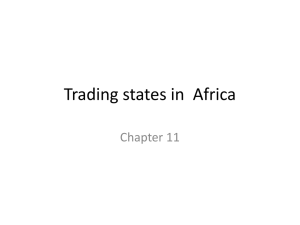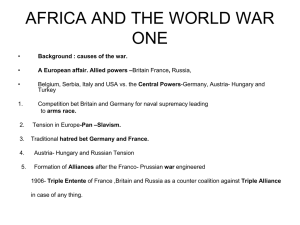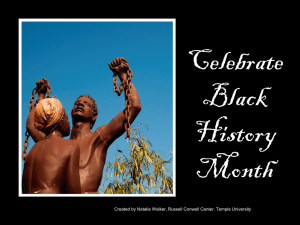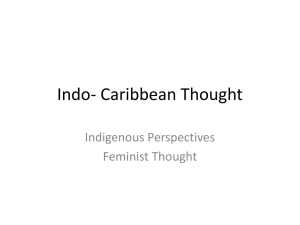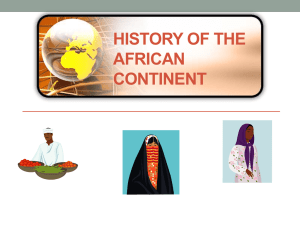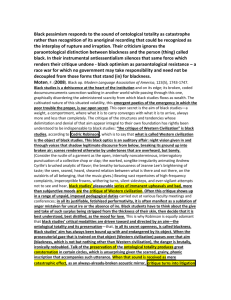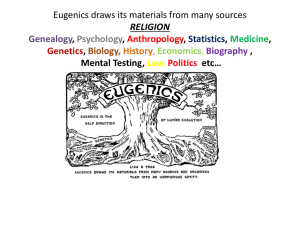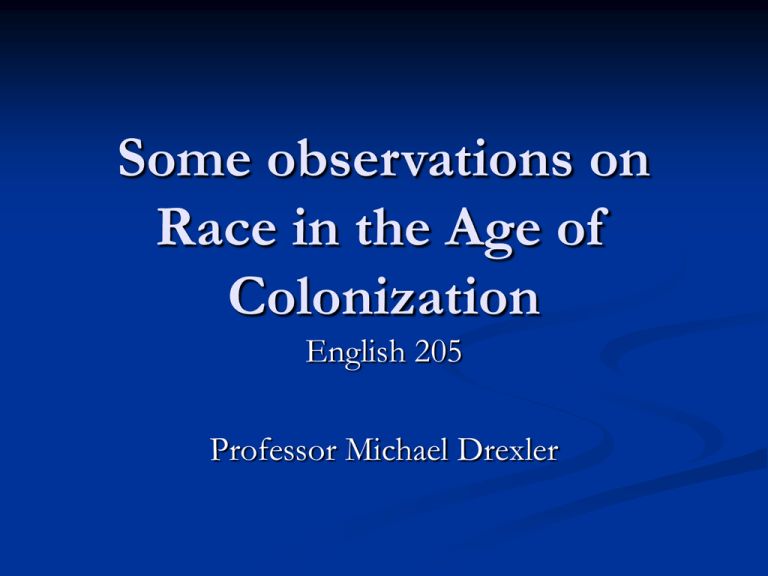
Some observations on
Race in the Age of
Colonization
English 205
Professor Michael Drexler
Different but not Subservient
From 1550, the date of first contact between English voyagers and
Africans, until 1631, when the first permanent English
settlement on African continent at Kormantin was established,
English trade was not primarily in but with Africans. “Initially,
therefore, English contact with Africans did not take place
primarily in a context which prejudged the Negro as a slave, at
least not as a slave of Englishmen.”
Compare Drake’s encounter with the Cimmarons with John
Sparke’s account of Hawkins’ expedition to capture and enslave
Africans. Hawkins, for his time, was exceptional.
Color
English observers struck by difference in skin
color, exaggerating the color of Africans by
calling it black
Used term black moors to distinguish subsaharan Africans from the more familiar North
African peoples, who were rarely enslaved after
the 16th century.
Black moors were a novelty to the English
Definition of Black and White
Concept of Blackness already loaded in English
language:
from OED, before the 16th century, the meaning of
black included, “Deeply stained with dirt; soiled, dirty,
foul. . . . Having dark or deadly purposes, malignant;
pertaining to or involving death, deadly; baneful,
disastrous, sinister. . . . Foul, iniquitous, atrocious,
horrible, wicked. . . . Indicating disgrace, censure,
liability to punishment, etc.”
Concept of whiteness as the opposite of blackness:
purity, virginity, virtue, beauty, beneficence, God.
Moreover, symbol of female beauty.
Question of Causation
What makes the African black?
Limited by wide-spread belief in monogenesis: all
humanity came from one source:
“the tawney Moore, blacke Negro, duskie Libyan, ash-coloured Indian,
olive-coloured American, should with the whiter European become one
sheep-fold, under one great Sheepheard, til this mortalitie being swallowed up of
Life, wee may all be one, as he and the father are one. . . . without any more
distinction of Colour, National, Language, Sex, Condition, all may bee
One in his that is One, and onely blessed for ever” (Rev. Samuel Purchas,
1614).
Climate theory: Sun must be cause of blackness
Contradiction
Why weren’t all people at the same latitudes
(Africans and American Indians, for instance)
the same color?
Why, too, if the sun caused blackness, didn’t
removing blacks from Africa to cooler climes
result in whitening even over generations?
Heathenism v. Christianity
Two facets of the concept of Heathenism
used as a means through negation to define what
was meant by Christian, an exercise in selfdefinition
could difference between two peoples be erased
through proselytizing and conversion?
Failure to programmatically attempt to convert
Africans proves that Englishmen distinguished
between blacks and American Indians, who were
the targets of campaigns to convert them.
Why?
Englishmen had no intention of settling in Africa,
while America was viewed as land for colonization
Perhaps a result of English bias against black skin
color
Universalism of Christianity (the unity of the nations
of man) played against the belief that the heathenism
of black people in Africa was a sign of some
fundamental defect. To English observers, Africans
appeared to have no religion at all.
Condition of Savagery
Black Africans didn’t live like Englishmen
fascination with African curiosities
helped English make the transition in their
view of themselves from medieval, religious
world to proto-scientific rational world-view,
from miracles to verifiable monstrosities
Distortions
Distortions of Africans in accounts of Africa
emphasize differences and condemn deviations
from English norm
overemphasize similarities—English used the
language and socio-cultural framework of their
own community to describe foreign cultures (kings,
counselors, gentlemen, etc.)
Savagery less important to discussion of
Africans than of Indians
Ourang-outang Situation
English stumble across black Africans and
apes at the same time, a tragic happenstance
merged with mythical tradition of man-like
beasts (Satyr, the minotaur, centaur)
Association of apes with heightened sexuality
Association of apes with the devil
Note on Racism via Albert Memmi
Racism:
Puts in relief certain differences
Bestows a value on those differences
Utilizes the valuation of those differences to the
benefit of one noticing them and giving them a
value
“No one of these conditions, by itself, is
sufficient to constitute racism.”
From Memmi, Albert, Racism. Minneapolis: U of Minnesota Press, 2000


